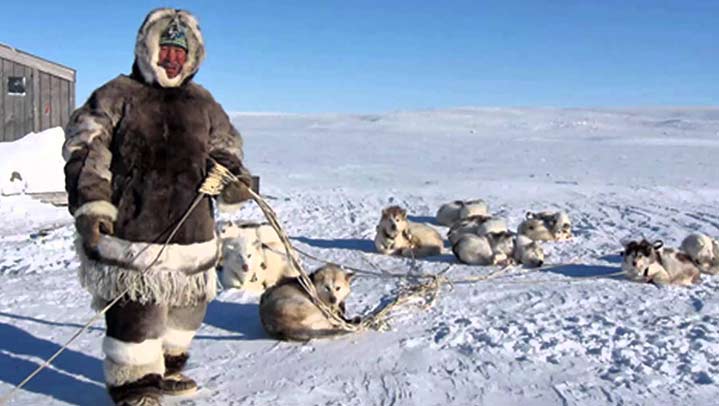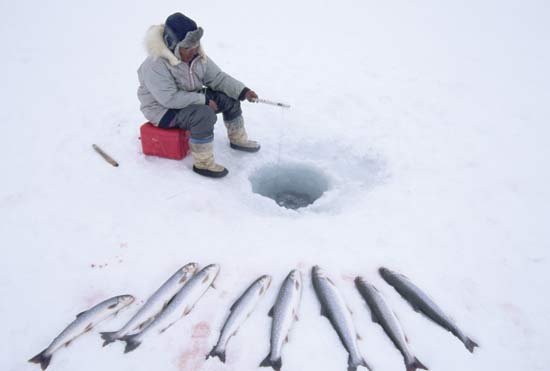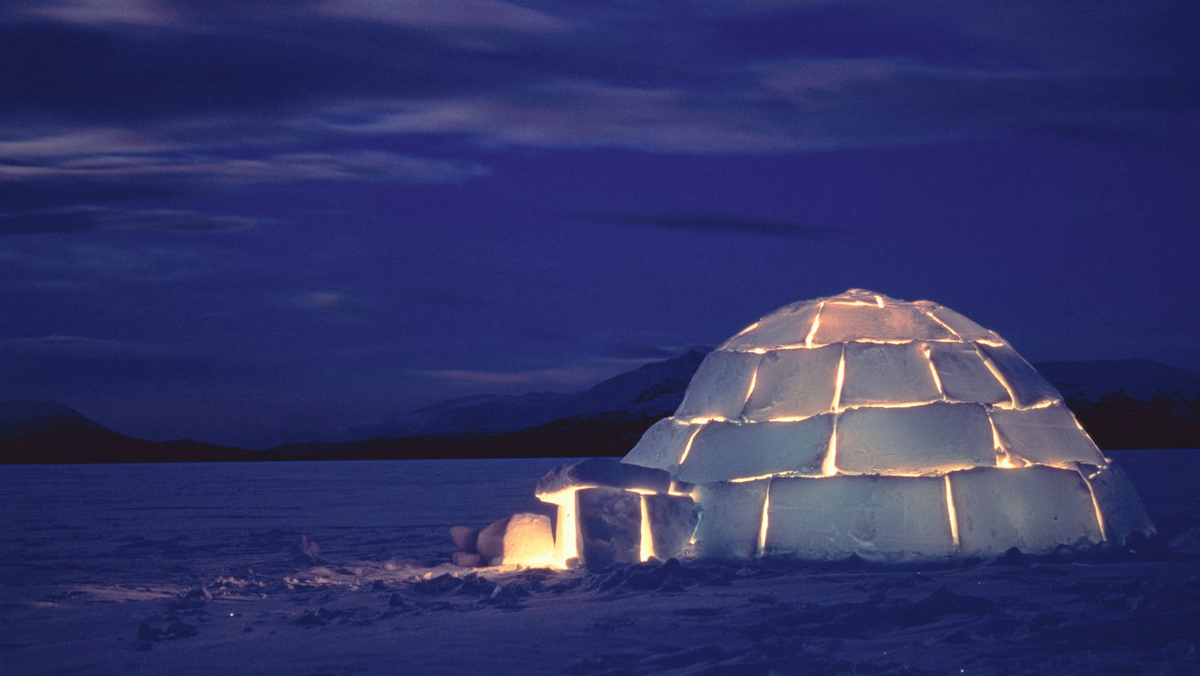Eskimo 🎣
Eskimo
Writing my article about Alaska made me want to know more about eskimo and their way of life ...

Eskimo is the name given to some Arctic peoples living in Alaska, Canada's Far North, Greenland and Eastern Siberia. They are also called Inuit Peoples and Yupiks.
Inuit represent the majority of the population called Eskimo.
All peoples covered by the term Eskimo are represented on the Inuit Circumpolar Council.
The name Eskimo could come from an Algonquin term, a dialect of Ojibway (a language spoken by the Ojibway people throughout the Great Lakes region and in the northern plains). It is one of North America's most important languages. This term would mean "raw meat eater".
Others say that it was the first European explorers who named them so low on a Mi'kmaq word related to snowshoes.
Eskimologists have adopted the term eskimo, invariable in Danish spelling, to traditionally designate the linguistic group.
In Canada, the Inuit name has been official since 1970 and has replaced the term Eskimo. Because this term can be considered as derogatory and offensive. In Greenland too, the term Eskimo is considered an offense by the Inuit. The natives call themselves Greenlanders.
In Alaska, however, the term Eskimos is tolerated by Yupiks who do not want to be likened to the Iñupiat people, an Alaskan indigenous people living in the Northwest Arctic and North Slope boroughs off the Bering Strait. .
The Yupiks, however, simply prefer the term Yupik.
In conclusion, to avoid offending anyone, the term Alaska Natives is more suitable than Eskimo for all the Yupiks and Iñupiat populations of Alaska.
Way of life

Inuit have developed very specific ways of adapting to the particularly harsh environment of the Arctic.
Indeed, they face a multitude of environmental constraints, such as the ground frozen permanently in depth, the absence of trees, except the driftwood brought by the sea, the vegetation covered with snow much of the year, extreme temperatures rarely rise above 10 ° C in the warmer months, the division of the year in two very uneven and contrasting seasons: a long winter, partly dark and icy and a short summer, bright and fresh, the sea frozen for several months making it difficult to access its vital resources for survival, ...
Because of these very difficult conditions, the Inuit had to adapt their way of life to the weather and their place of life.
They have become nomadic or semi-nomadic hunters, occasionally fishing and gathering. They live in coastal areas and depend mainly on seafood, including marine mammals, with the exception of a few groups. inland, such as the Eskimo in the interior of northern Alaska, the Eskimo Caribou and the Inuit of Quebec, who live primarily on land animals.
Habitat

Inuit live among other things in igloos. The igloo is a shelter built of blocks of snow or if it is a shelter pre-winter, built with peat, in this case, it is called kashim.
Generally, the igloo adopts the shape of a dome. Due to the excellent insulating properties of snow, the interior of an igloo is surprisingly comfortable, even acoustically.
Igloos are actually very hospitable. It's scientific, the snow is combined with ice to build the walls of the dome. With the heat of the occupant's body and perhaps the use of oil lamps or candles, the walls of the igloo begin to melt, but as soon as this happens, the outside temperatures freeze them again. Several days of this process of fusion and refreezing create an excellent insulation which gives the igloo a pleasant and welcoming environment with a temperature that can go up to 15 ° C.
The snow used to build an igloo must have sufficient structural strength to be cut and stacked properly.
The best snow to use is the one that has been squeezed by the wind, which makes the ice crystals compact.
Blocks of snow extracted from the top hole are usually used to shape the bottom of the shelter. Indeed, ventilation holes are essential to the renewal of the air.
The snow blocks should be about 1 meter long, 40 cm high and 20 cm wide.
The entrance must be as low as possible to prevent the icy wind from blowing. We can even build a small tunnel that serves as an airlock to protect against wind and heat loss when we open the door.
In some igloos, the inside is covered with skins of animals, it allows to increase the temperature of almost 20 ° C. Inuit get hot by burning whale fat.
I'm fascinated with eskimos since the first time I watch Nanook of the north! Thank you for share it!
what do we really know about them? Beyond the eskimo, harpoons, and hooded fur coats, most people know very little about these historical hunter-gatherers and their modern kin.
I watch Nanook of the north! i like your photo.
Thank you for share it!
A way of life that was well worth living, the planet was lovely back then, now look at our world, well done mankind, you succeeded in destroying our planet @lndesta120282
They mostly eat animal products and also animals like seals and their organs ... wrrr. I once saw a documentary about it. Poor seals :c
Informative....Thanks for the information and helpful .
Thank's for sharing sir.
wow here some amazing place..very big fish..and a nice house.... i impressed to see it... i waiting for your next post brother
I've always wanted to head north to: "The Greatland." Someday I'll get there.
This is a very interesting read in sir @lndesta120282